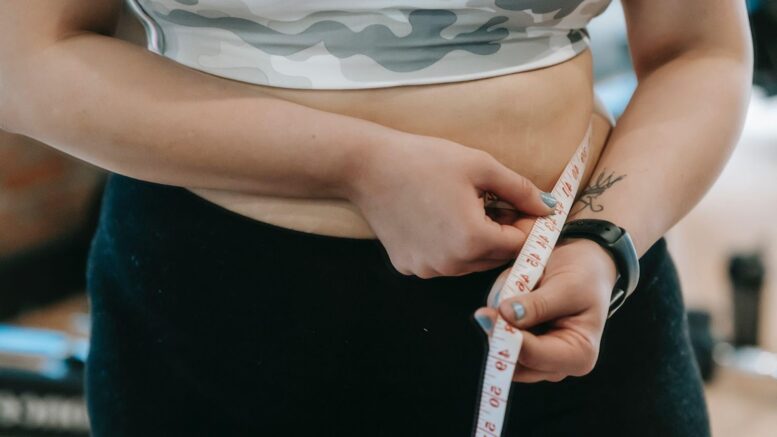As healthcare providers, we understand the importance of body weight and composition in maintaining good health. However, traditional methods such as dieting and exercise can sometimes fall short. Body recomposition is a revolutionary approach that focuses on building lean muscle mass while reducing body fat, leading to significant improvements in overall health and well-being. In this ultimate guide to body recomposition, we’ll explore everything you need to know about this cutting-edge approach, including the science behind it, how to implement it with your patients, and the potential benefits and risks.
Understanding Body Composition
Before diving into body recomposition, it’s important to understand body composition. Body composition refers to the proportion of fat, muscle, and other tissues that make up the body. The two main components of body composition are fat mass and lean body mass. Fat mass refers to the total amount of fat in the body, while lean body mass includes everything else, such as muscle, bones, and organs.
Body composition can be measured in several ways, including skinfold thickness, bioelectrical impedance analysis, and dual-energy x-ray absorptiometry (DXA). Of these methods, DXA is considered the gold standard for measuring body composition due to its accuracy and precision.
Benefits of Body Recomposition
Body recomposition offers several benefits beyond just improving body composition. Building lean muscle mass can increase metabolism, leading to increased calorie burn even at rest. This can make it easier to maintain a healthy weight and reduce the risk of obesity-related diseases such as diabetes and heart disease.
In addition, body recomposition can improve physical performance and overall quality of life. Increased muscle mass can improve strength and endurance, making it easier to perform daily tasks and engage in physical activity. This can lead to better mental health, increased self-confidence, and a greater sense of well-being.
The Science Behind Body Recomposition
Body recomposition is based on the principle of muscle protein synthesis (MPS) and muscle protein breakdown (MPB). MPS is the process by which the body builds new muscle tissue, while MPB is the process by which the body breaks down existing muscle tissue.
To build muscle, MPS must exceed MPB over a period of time. This can be achieved through resistance training, which causes small tears in muscle fibers that the body repairs and rebuilds stronger. Adequate protein intake is also crucial for muscle building, as protein provides the building blocks necessary for MPS.
Reducing body fat requires creating a calorie deficit, either through diet, exercise, or a combination of both. This causes the body to burn stored fat for energy, leading to a reduction in overall body fat.
Nutrition for Body Recomposition
Nutrition plays a crucial role in body recomposition. Adequate protein intake is essential for muscle building, with most experts recommending at least 1 gram of protein per pound of body weight per day. In addition, carbohydrates and fats are also important for energy and overall health.

To reduce body fat, it’s important to create a calorie deficit. This can be achieved through diet, exercise, or a combination of both. A moderate calorie deficit of 250-500 calories per day is generally recommended for healthy weight loss.
In addition, it’s important to focus on nutrient-dense foods such as fruits, vegetables, whole grains, and lean protein sources. These foods provide essential vitamins and minerals while also helping to manage hunger and cravings.
Exercise for Body Recomposition
Resistance training is the cornerstone of body recomposition. This can include weight lifting, bodyweight exercises, or resistance bands. The goal is to challenge the muscles and create small tears in the muscle fibers, which the body then repairs and rebuilds stronger.
In addition to resistance training, cardiovascular exercise can also be beneficial for reducing body fat and improving overall health. This can include activities such as running, cycling, or swimming.
The frequency and intensity of exercise will vary depending on individual goals and fitness level. For most people, 3-4 days per week of resistance training and 2-3 days per week of cardiovascular exercise is a good starting point.
Supplements for Body Recomposition
While proper nutrition and exercise are the foundation of body recomposition, supplements can also play a role in supporting muscle building and fat loss. Some of the most commonly used supplements for body recomposition include protein powder, creatine, and caffeine.
Protein powder can be a convenient way to increase protein intake, especially for those who struggle to meet their daily protein needs through food alone. Creatine is a naturally occurring compound in the body that helps to increase energy and strength during exercise. Caffeine can improve energy and focus during workouts while also increasing metabolism and fat burning.
It’s important to note that supplements are not a substitute for proper nutrition and exercise. They should be used in conjunction with a healthy diet and regular exercise routine.
Tracking Progress and Making Adjustments
Tracking progress is an important part of body recomposition. This can include measurements such as body weight, body fat percentage, and muscle mass. It’s important to track progress regularly to ensure that the right adjustments are being made to the nutrition and exercise plan.

If progress stalls or plateaus, it may be necessary to make adjustments to the nutrition or exercise routine. This could include increasing or decreasing calorie intake, adjusting macronutrient ratios, or changing up the exercise routine.
Common Misconceptions About Body Recomposition
There are several common misconceptions about body recomposition. One of the biggest is that it’s not possible to build muscle and lose fat at the same time. However, research has shown that it is possible to achieve both goals simultaneously through proper nutrition and exercise.
Another misconception is that body recomposition is only for bodybuilders or fitness enthusiasts. However, anyone can benefit from body recomposition, regardless of fitness level or physique goals.
Implementing Body Recomposition in Patient Care
As healthcare providers, we can play an important role in helping our patients achieve their body composition goals. This can include providing education on proper nutrition and exercise, monitoring progress, and making adjustments to the treatment plan as needed.
It’s important to approach body recomposition with a holistic perspective, focusing on overall health and well-being rather than just aesthetics. Encouraging patients to set realistic goals and providing support and guidance throughout the process can help to ensure long-term success.
Conclusion and Future Outlook
Body recomposition is a cutting-edge approach to improving body composition and overall health. By focusing on building lean muscle mass while reducing body fat, patients can achieve their desired physique while also improving physical performance and quality of life.
As healthcare providers, we can play an important role in implementing body recomposition in patient care. By providing education and support, we can help our patients achieve their body composition goals and improve their overall health and well-being.
Looking to the future, body recomposition will continue to be an important area of research and innovation. New technologies and techniques will continue to emerge, offering even more effective and personalized approaches to body transformation.
